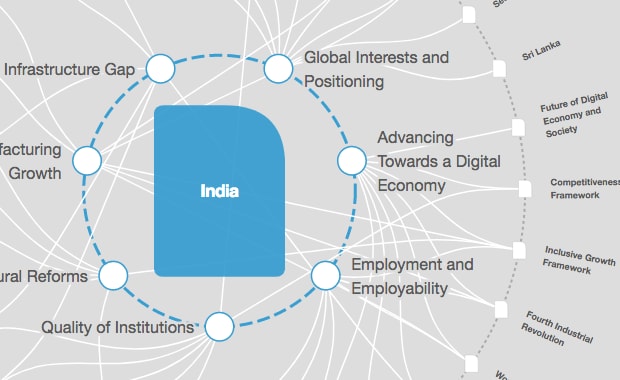What can Germany teach India about apprenticeships?

Sriram Gutta
Head, Engagement and Operations; Member of the Executive Committee, World Economic ForumIn my previous article, I highlighted India’s demographic dividend and the role of internships in smoothing over the transition between education and employment. Another such tool for skill development is apprenticeships. Around 12 million people are expected to join India’s workforce every year over the next decade. In contrast, the country has a total training capacity of around 4.3 million.
While internships are most relevant for the 17 million students enrolled in tertiary education, apprenticeships are a useful way to teach skills to millions of young people and upskill or re-skill hundreds of millions of working age people. Along similar lines, Ayesha Khanna has written a very interesting piece on ‘externships‘.
What is an apprenticeship?
At its core, the apprenticeship model is ‘earning while learning and doing’. Trainees undergo a dual programme through classroom instruction at a vocational school and on-the-job training with an employer. These provide the ideal combination of a theoretical understanding of the area and the practical skills required for the job. The apprentices develop both skills and personality through the programme.
Germany’s acclaimed apprenticeship programme
Germany has the lowest youth unemployment rate in Europe and among the lowest in OECD countries. One of the most important, if not the only, reasons is its Dual Vocational Training System (TVET). In this system, students – after high school – apply to a private company for a contract of up to three years. Upon acceptance, the students receive in-class training in their field of choice at a government funded vocational school. The practical training and vocational schools have both separate legislations and curricula. Most students spend 3-4 days a week at work and one to two days in the school. At the end of the term, students receive a certificate that ensures that they can transfer between similar businesses. The system works because the government, private businesses and intermediaries, including chambers of commerce, industry and unions, are aligned in their objectives and each has its own incentives.
The problem with India’s current model
Having spoken to many young men and women in urban and rural India, the biggest reason for the non-uptake of Industrial Training Institutes (ITIs) is poor links to industry. This means that these men and women don’t often have a job at the end of their training, so the cost of going through the training is very high. Poor links to industry also means that the private sector doesn’t co-design the curriculum with the government, which in turn leads to a curriculum that is not relevant to the private sector. Additionally, the lack of investment in infrastructure and technology makes it a poorer environment for learning, restricting the overall development of students.
3 reasons why India can’t simply adopt the German model
- The state in Germany pays school fees and also supports high schools and community colleges to be training partners
- The schooling system in Germany supports the apprenticeship model
- A standardised curriculum is developed by the government in collaboration with educational institutes, the private sector, employee unions and chambers of industry and commerce
How can India bring the different pieces of the puzzle together?
Over the last decade, there has been a strong emphasis on skills and employment, leading to many initiatives and programmes. While not perfect, India has the basic architecture in place. This includes the ITIs (government managed and private) that provide vocational skills, the National Vocational Education Qualifications Framework (NVEQF), and the National Skills Development Corporation (NSDC) that provides funding to build scalable, for-profit vocational training initiatives through Public-Private Partnership. NSDC further supports curriculum design and development, faculty training, standards and quality assurance, technology platforms and student placement mechanisms. However, both the public and private sector can go a long way in collaborating with each other and helping teach skills to millions of young people.
It is time for India to use its existing resources, learn from the German model and develop its own comprehensive approach to apprenticeships.
The National Strategy Day on India 2015 takes place in New Delhi from 3-4 November.
Author: Sriram Gutta, Senior Manager, Global Leadership Fellow, World Economic Forum
Image: An instructor (C) teaches at the Larsen & Toubro (L&T) construction skills training institute in Panvel, in the western Indian state of Maharashtra November 18, 2014. REUTERS/Danish Siddiqui
Don't miss any update on this topic
Create a free account and access your personalized content collection with our latest publications and analyses.
License and Republishing
World Economic Forum articles may be republished in accordance with the Creative Commons Attribution-NonCommercial-NoDerivatives 4.0 International Public License, and in accordance with our Terms of Use.
The views expressed in this article are those of the author alone and not the World Economic Forum.
Stay up to date:
Future of Work
Related topics:
Forum Stories newsletter
Bringing you weekly curated insights and analysis on the global issues that matter.
More on Geographies in DepthSee all
Naoko Tochibayashi
October 30, 2025






